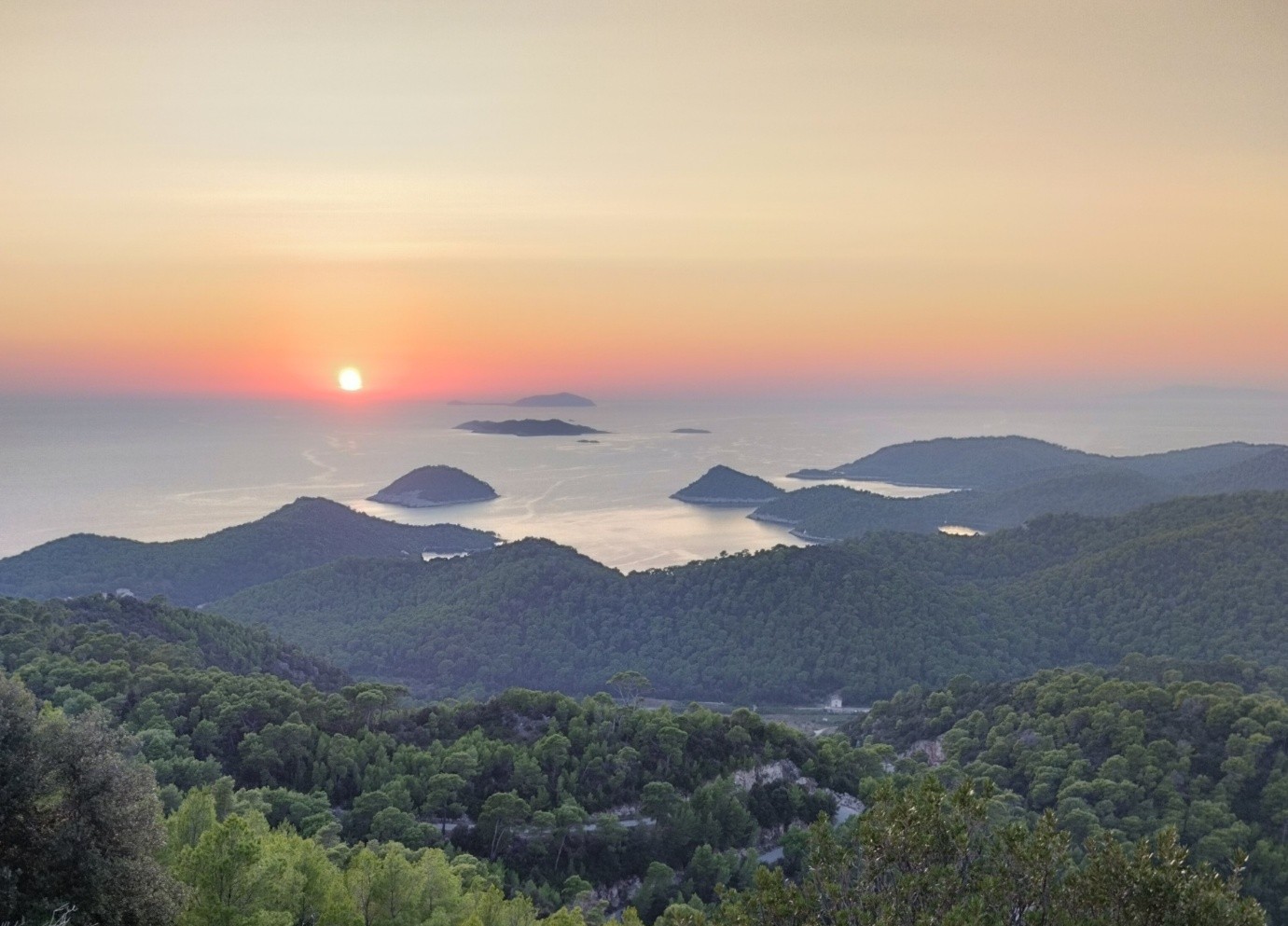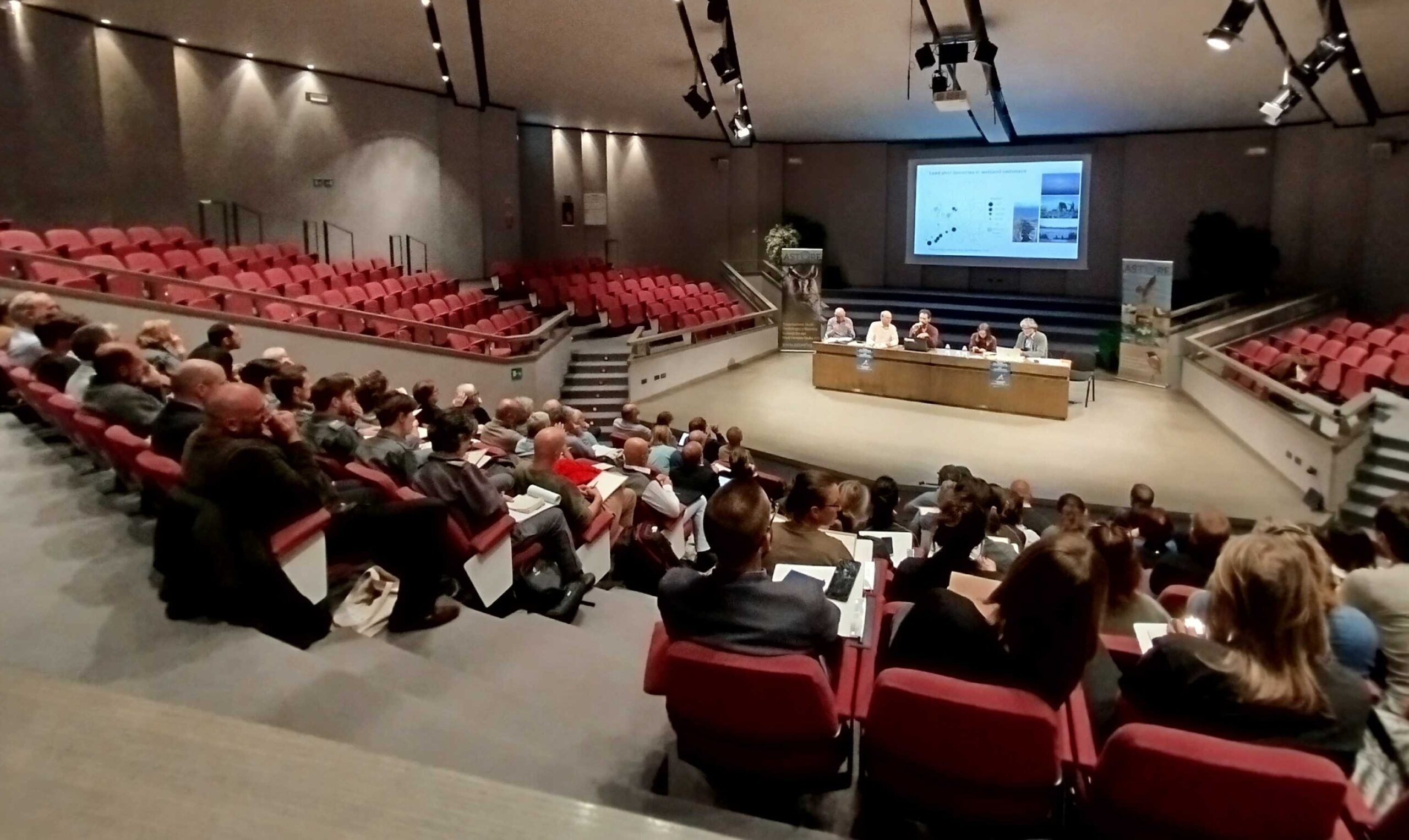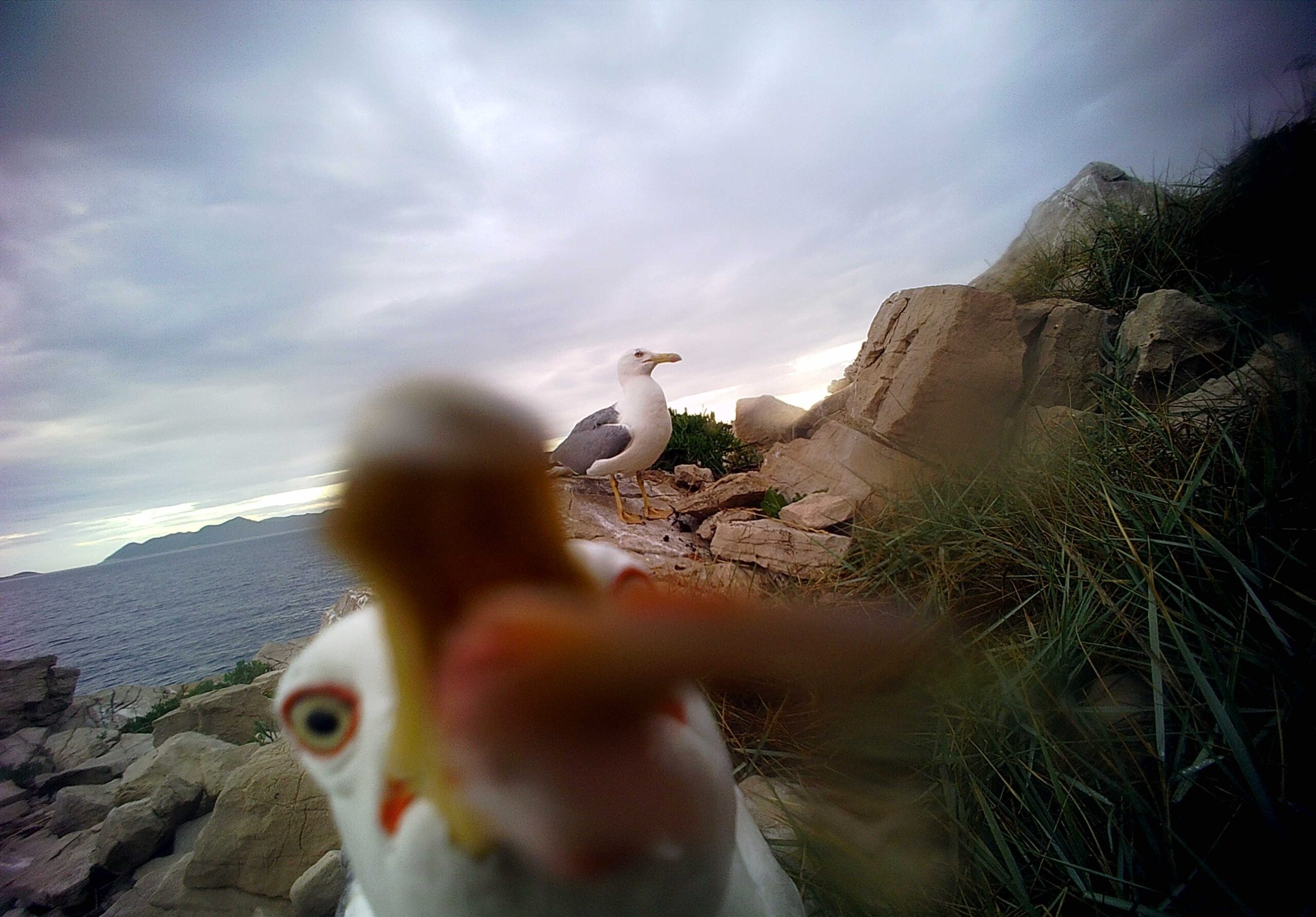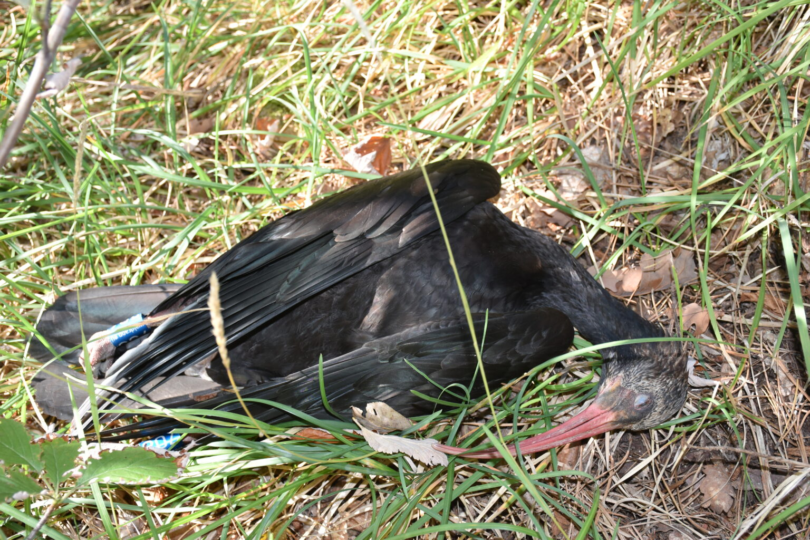
Two northern bald ibises (Geronticus eremita) were electrocuted near Senj. A group of 12 bald ibises from the reintroduction program, run by the Austrian organization Waldrapp Team, flew through Croatia between October 28 and October 30. The ibises found their first refuge near Bjelovar. On the second night, they settled to roost near Senj, where two young birds from the group – Sitara and Brie – perched on a medium-voltage power pole and were electrocuted.
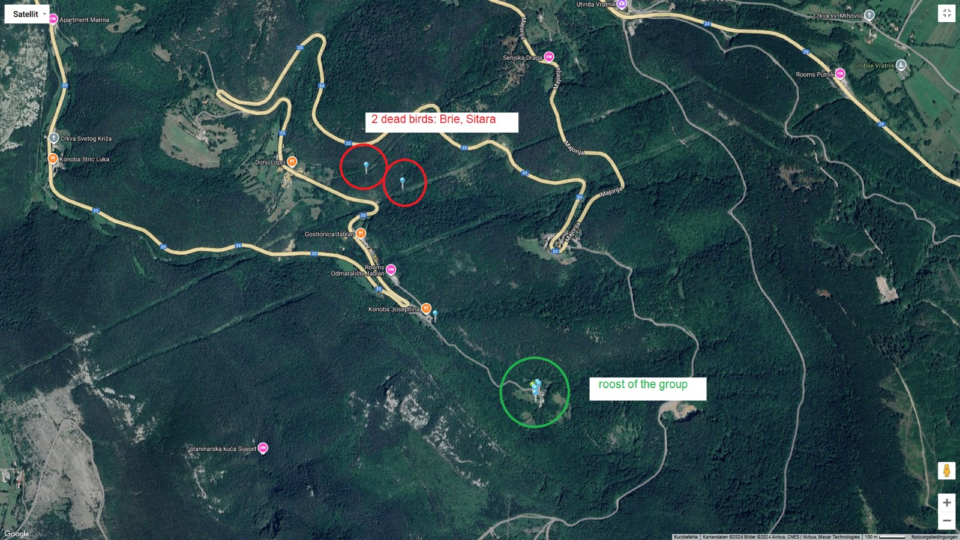
This tragic incident highlights the importance of mitigating dangerous power grid poles as a priority to ensure safe flyways.
The Waldrapp Team, with whom we have collaborated since late 2019 to monitor the flight of these ibises, reached out to Biom’s team upon the birds’ entry into Croatia, and we began tracking their journey. “They flew through Moslavina and Bosnia toward Velebit, roosting together at a farm in Senjska Draga. While preparing for the next leg of their journey, two ibises landed on a medium-voltage pole. It appears that the birds simultaneously completed a circuit, causing their deaths. Our team visited the site, and in cooperation with the relevant authorities, the deceased birds were taken to an authorized veterinarian and subsequently transported to the Faculty of Veterinary Medicine in Zagreb for autopsy. The findings confirmed that they died from electric shock,” says Boleslaw Slocinski, head of the Safe Flyways program at Association Biom.
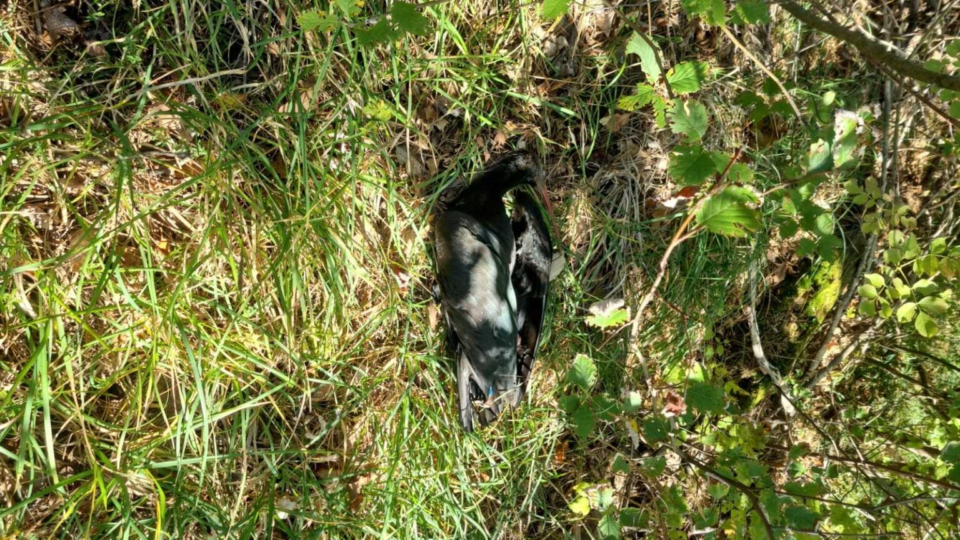
Information about dangerous power poles will be sent to HEP-Operator distribucijnoj sustava d.o.o. (HEP ODS), which maintains the medium-voltage network and implements mitigation measures across Croatia.
Dr. Johannes Fritz (Chief Executive, Waldrappteam Conservation & Research): “Over the years 2014-2023, 44% of Northern Bald Ibis losses with a known cause were caused by electrocution.
The deaths occur in all countries where the birds are present, with the exception of Germany. There, the pylons are secured by law. We do not lose any birds in Germany, despite the fact that they are frequently present. This clearly shows the effectiveness of nationwide security measures.
In a recent publication Serratosa et al. 2024, the authors also arrive at 40.5% electrocution as the cause of death for almost 50 migratory bird species on the migration routes in Africa and Eurasia, which corresponds very well with our data.
There is therefore hardly any other single measure in species conservation with such a large effect -> the reduction of deaths in numerous and often endangered migratory bird species by over 40%. And in contrast to illegal hunting and other forms of environmental crime, which are very difficult to combat, the measures for electrocution are relatively simple and actually also relatively inexpensive”.

This year, some of the northern bald ibises will be trained to follow new migration routes toward Andalusia. Due to climate change, migrating through the Alps is becoming increasingly challenging, making it necessary for the birds to have an alternative route. This new path will also connect the reintroduction programs in Spain and Germany.

This species of bird became extinct in Croatia in the 18th century, with the last individuals nesting in Istria. By the early 21st century, the global population of the northern bald ibis had dwindled to just 200–250 individuals, surviving only in North Africa and the Middle East. In recent years, however, the ibis has reappeared in Croatia, thanks to the LIFE Northern Bald Ibis project, which has been working on reintroducing the species in Germany and Austria, where about 140 ibises are nesting in artificially created colonies. Birds from this reintroduction program typically spend the winter in Italy, though some attempt to winter along the eastern Adriatic coast, where, unfortunately, many are injured.
In early 2020, a tragic incident occurred when four ibises died in Croatia, two of which were poached near Vrana Lake Nature Park. Regrettably, no criminal charges followed this incident, nor the later case of the bald ibis named Gipsy, who was found dead near Opuzen on March 6 of last year.




